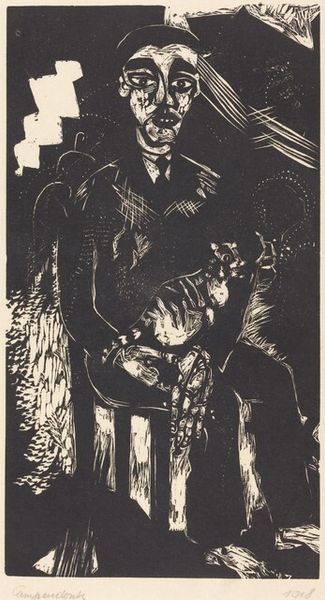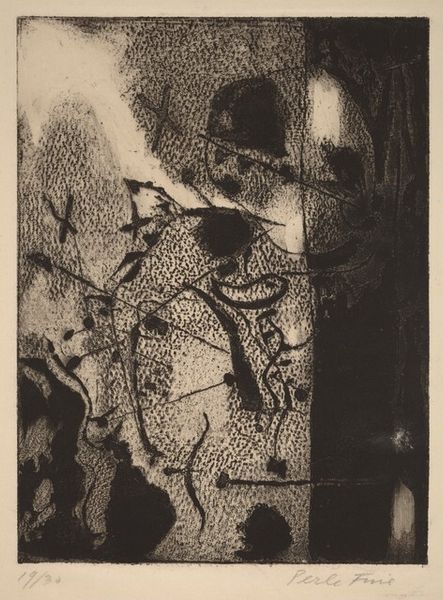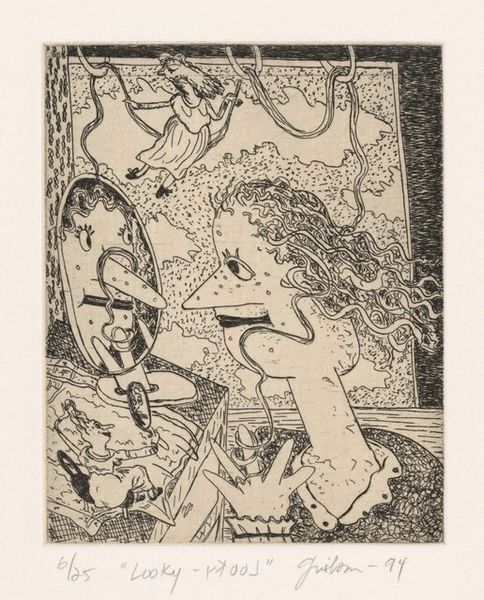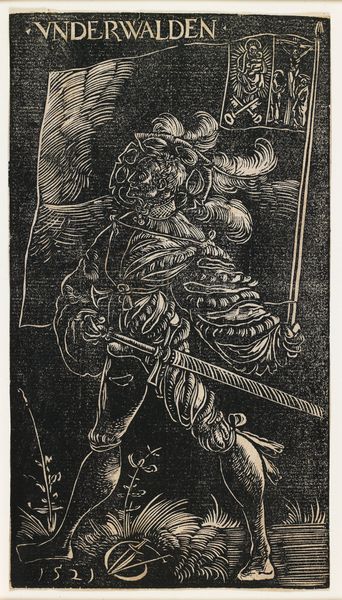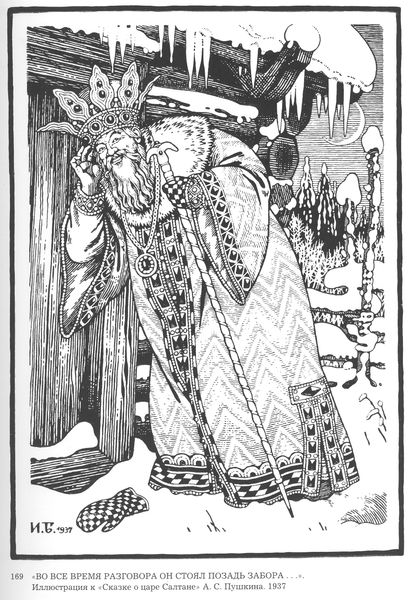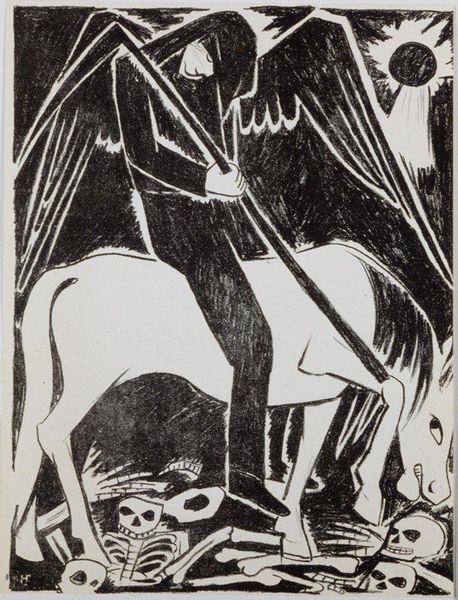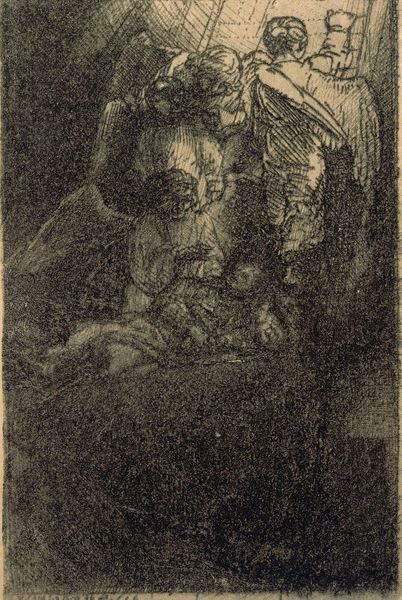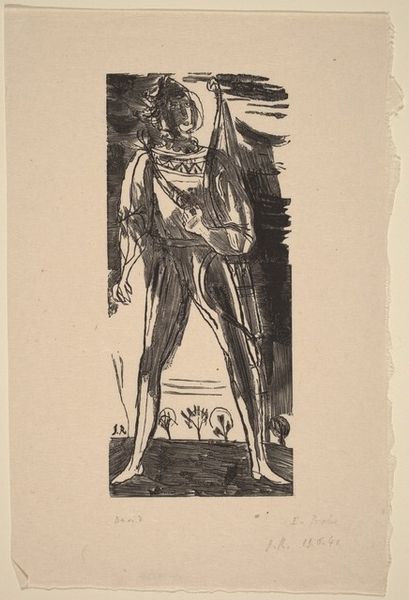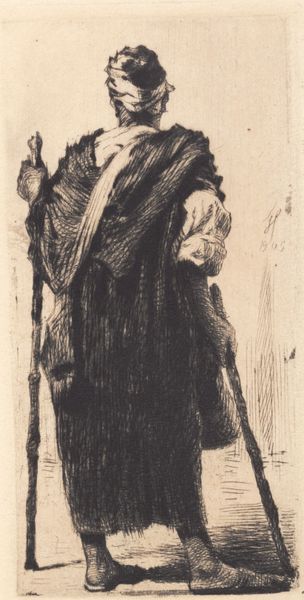
Dimensions: image: 28 x 20.2 cm (11 x 7 15/16 in.) sheet: 47.6 x 33.1 cm (18 3/4 x 13 1/16 in.)
Copyright: National Gallery of Art: CC0 1.0
Editor: This is "Man with a Sack," an etching by Marc Chagall, created sometime between 1922 and 1950. The stark black and white contrast really makes it striking, but I'm not sure what to make of it. What do you see in this piece? Curator: Well, I immediately notice how the violin is strapped to the figure's side, almost like a weapon. In many cultures, the violin, particularly in Eastern European Jewish traditions so close to Chagall's heart, symbolizes both joy and sorrow, celebration and lament. Do you see how it's positioned near the heart? Editor: Yes, it’s almost like it *is* the heart. It’s definitely not where one would expect to see a violin! What about the sack, though? Curator: The sack, often depicted in Chagall's work and that of other Eastern European artists, acts as a universal symbol of burden, exile, or the diaspora. He carries not only possessions but memories and the weight of a culture constantly on the move. The figure appears hunched, burdened, perhaps even resigned, against a shadowy landscape. Does the landscape strike you as familiar or more abstract, a landscape of the mind perhaps? Editor: It feels more abstract, like it's reflecting an internal state more than any actual place. So, the violin is the heart, the sack is a culture's weight, all held within this internal landscape. Curator: Precisely. Chagall masterfully layers these symbolic weights. His art doesn’t simply depict; it embodies and resonates with centuries of cultural experience. I think you see it! Editor: I do now. That's fascinating! Thank you, that really illuminated the piece for me.
Comments
No comments
Be the first to comment and join the conversation on the ultimate creative platform.

